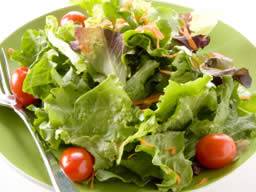April 2018
Jennifer Burris, James M Shikany, William Rietkerk, Kathleen Woolf
Abstract
Background: A high glycemic index (GI) and glycemic load (GL) diet may stimulate acne proliferative pathways by influencing biochemical factors associated with acne. However, few randomized controlled trials have examined this relationship, and this process is not completely understood.
Objective: This study examined changes in biochemical factors associated with acne among adults with moderate to severe acne after following a low GI and GL diet or usual eating plan for 2 weeks.
Design: This study utilized a parallel randomized controlled design to compare the effect of a low GI and GL diet to usual diet on biochemical factors associated with acne (glucose, insulin, insulin-like growth factor [IGF]-1, and insulin-like growth factor binding protein [IGFBP]-3) and insulin resistance after 2 weeks.
Participants: Sixty-six participants were randomly allocated to the low GI and GL diet (n=34) or usual eating plan (n=32) and included in the analyses.
Main outcome measures: The primary outcomes were biochemical factors of acne and insulin resistance with dietary intake as a secondary outcome.
Statistical analyses: Independent sample t tests assessed changes in biochemical factors associated with acne, dietary intake, and body composition pre- and postintervention, comparing the two dietary interventions.
Results: IGF-1 concentrations decreased significantly among participants randomized to a low GI and GL diet between pre- and postintervention time points (preintervention=267.3±85.6 mg/mL, postintervention=244.5±78.7 ng/mL) (P=0.049). There were no differences in changes in glucose, insulin, or IGFBP-3 concentrations or insulin resistance between treatment groups after 2 weeks. Carbohydrate (P=0.019), available carbohydrate (P<0.001), percent energy from carbohydrate (P<0.001), GI (P<0.001), and GL (P<0.001) decreased significantly among participants following a low GI/GL diet between the pre- and postintervention time points. There were no differences in changes in body composition comparing groups.
Conclusions: In this study, a low GI and GL diet decreased IGF-1 concentrations, a well-established factor in acne pathogenesis. Further research of a longer duration should examine whether a low GI and GL diet would result in a clinically meaningful difference in IGF-1 concentrations leading to a reduction in acne. This trial was registered at clinicaltrials.gov as NCT02913001.










